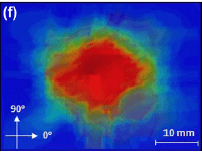Aksil
Mechanical
- Jan 24, 2020
- 7
thread799-343531
Hello
I have a problem about the simulation of progressive damage in composite plate under repeated (multi-impact) low velocity impact using soubroutine Vumat implimented in Abaqus ,I was developped the soubroutine and i validate with experemental data with different creteria(hashin-puck) in the first drop,but i don't know how i will repeat the impact events ,than if seomone do it preveousely I have one idea,with the use of results of the last impact but when i do the import of odb the simulation dont run,in the message indicate that the model need assign section and materials on the other hand ,i think about another method , creating more than one impactor in the model to achieve successive impacts. Those impactors should be arranged in a queue with an interval, moving downwards together.but the problem that the first impactor when it rebond crash with the second impactor , The interval should be calculated in order to obtain an initial impact velocity ? I will be delighted if someone can explain to me
Hello
I have a problem about the simulation of progressive damage in composite plate under repeated (multi-impact) low velocity impact using soubroutine Vumat implimented in Abaqus ,I was developped the soubroutine and i validate with experemental data with different creteria(hashin-puck) in the first drop,but i don't know how i will repeat the impact events ,than if seomone do it preveousely I have one idea,with the use of results of the last impact but when i do the import of odb the simulation dont run,in the message indicate that the model need assign section and materials on the other hand ,i think about another method , creating more than one impactor in the model to achieve successive impacts. Those impactors should be arranged in a queue with an interval, moving downwards together.but the problem that the first impactor when it rebond crash with the second impactor , The interval should be calculated in order to obtain an initial impact velocity ? I will be delighted if someone can explain to me



